Toner question
 Copurnicus
Posts: 58 ✭✭
Copurnicus
Posts: 58 ✭✭
Hello, I’m wondering what all the different terms of toning are like horseshoe toning, and rim toning and tab toning and so on I’m just wondering how many different phrases people can think of I’m thinking about collecting one of each “type”
0
Comments
If you could just post one type, you can think of, besides these that hasn’t been typed already that would be great
Thank you y’all so much for even clicking into this
textile, tab, target, crescent. pull away
from
https://www.reddit.com/r/coins/comments/cx8ubw/general_guide_for_toned_coins_the_chemical/
For toned Morgans
https://www.monstertonedmorgans.com/all-about-toned-morgans
https://www.coincommunity.com/forum/pop_profile.asp?mode=display&id=102076
https://www.vamworld.com/forum/memberlist.php?mode=viewprofile&u=2220
https://boards.ngccoin.com/profile/61076-johnhenry9009/
https://www.mycollect.com/Jonhherny9009
Bag toning (for Morgan dollars)
End of roll toning.
Bull’s-eye toning
Mark Feld* of Heritage Auctions*Unless otherwise noted, my posts here represent my personal opinions.
If “monster toning” is to be included on such a list, it should apply to all types of coins, not just Morgan dollars.
Mark Feld* of Heritage Auctions*Unless otherwise noted, my posts here represent my personal opinions.
AT - Artificial Toning
Album Toning
Circulated cameo toning
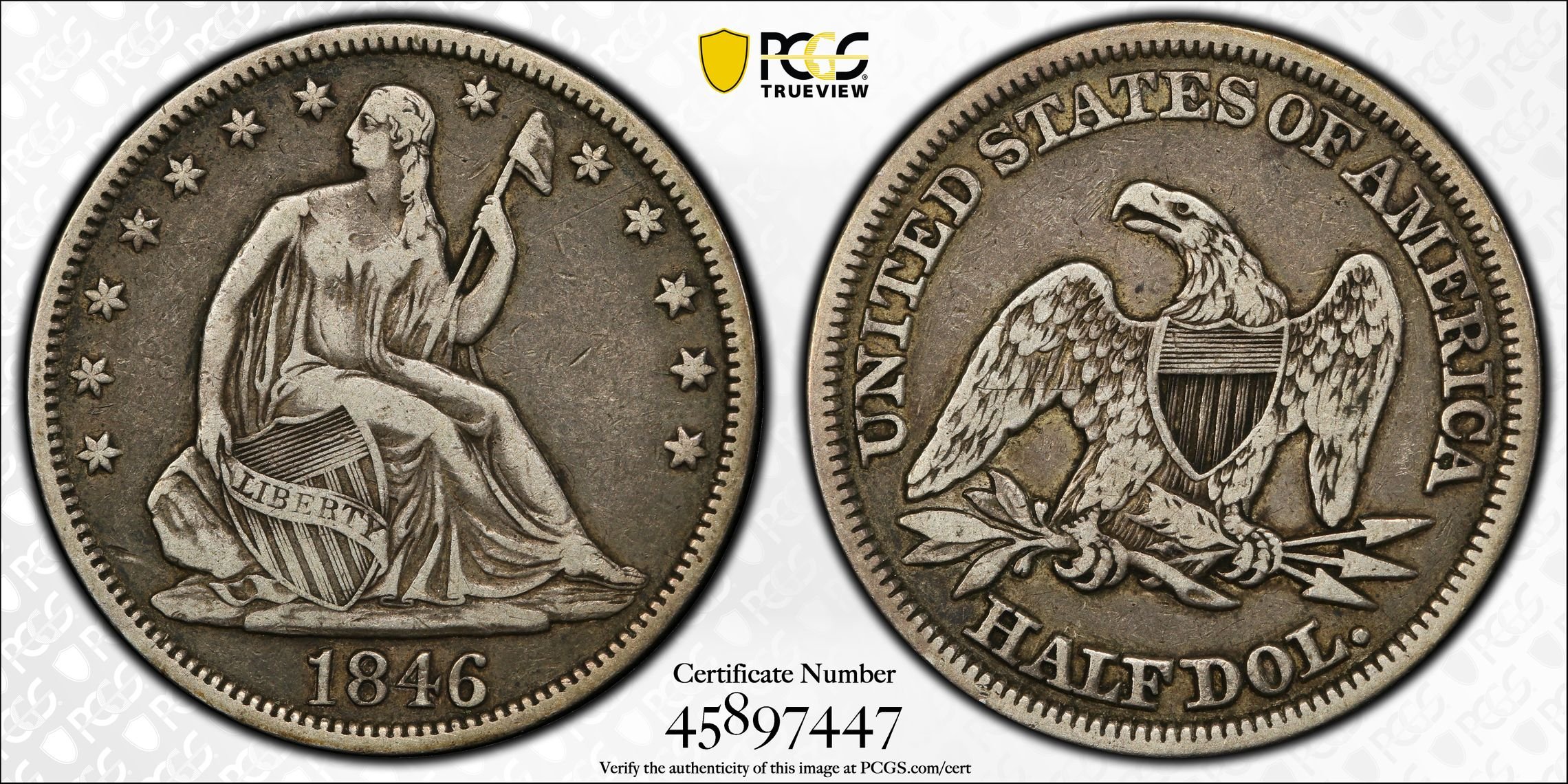
Isn’t that look due more to a wear pattern? Similarly, coins receive the Cameo or Deep Cameo designation due to the contrast between the devices and the fields, not because they’re toned or color-free.
Mark Feld* of Heritage Auctions*Unless otherwise noted, my posts here represent my personal opinions.
The reason I'm quoting @MFeld is to ask a question that may help both the poster and myself.

When I see any, and I mean any toning, on any coin (cent, dime, quarter, nickel, for now) there's always a 95% chance that something was a miss on the toned coin's surface (obv. or rev. )
But, that's for another day's post.
My question is. (for both of us)
"Is this what you would call a "Bull's-eye style of toning"?
The coin was given to me in pocket change.
1 The toning is natural. Thus, pocket change and I still remember who gave it to me.
2 The colors are what could be, in a real life photo. Stone (tan), Water (blue) etc.
3 The colors are placed as what I would described as Bull's-eye placement.
The coin was given to me in pocket change. As seen in hand.
In many cases I'd say yes. but then why isn't there lighter toning in the center of large fields in the coin above. I think the uniform dark color is caused by the environment in which they are stored.
I'm emphasizing the uniform toning in the fields and how it contributes to the overall cameo effect. The lighter surfaces on the devices can be produced by wear and also by situations that do not involve wear. This 1879 is an example, with abrupt toning changes that likely are not caused by wear but by abrupt changes in exposure to oxidants. Envelopes, flips, and albums with slides could produce such abrupt micro-environmental changes through contact with surfaces.
At least that's my big nerdy thinking on this. Does it pass the smell test?
Target toning

- Bob -

MPL's - Lincolns of Color
Central Valley Roosevelts
TBN Toned:
Tab Toning...
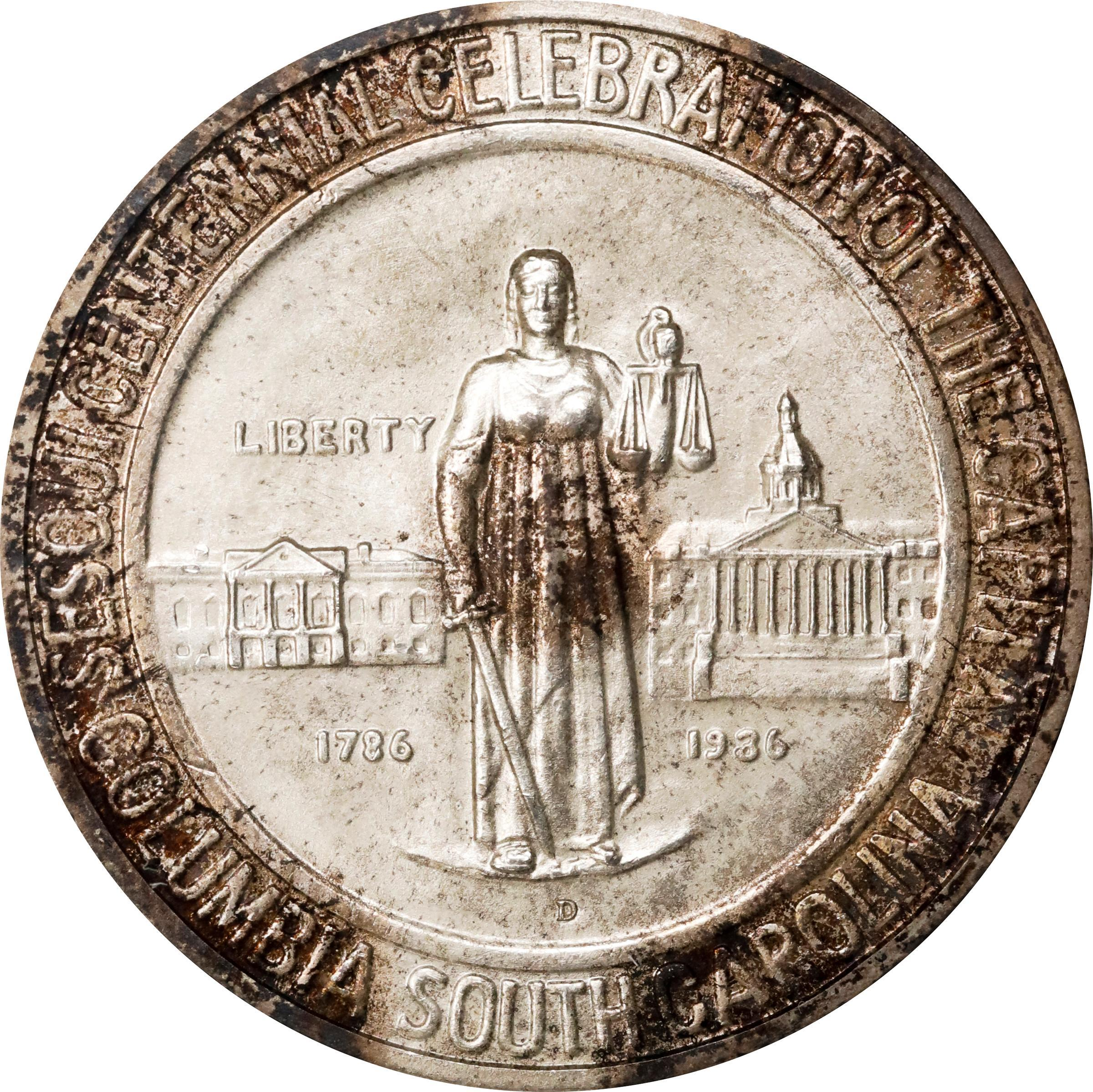
https://auctions.stacksbowers.com/lots/view/3-1GWC9B/1936-d-columbia-south-carolina-sesquicentennial-ms-65-ngc-oh-with-original-three-coin-tab-holder-mailer-letter-and-3-columbia-
Topic covered many times in the past, but like most posts, could use photos . I think these are 2 examples of tab toning. A tab or even scotch tape was holding the coin's obverse side in some medium, cardboard, felt, etc., that totally saturated the reverse.
. I think these are 2 examples of tab toning. A tab or even scotch tape was holding the coin's obverse side in some medium, cardboard, felt, etc., that totally saturated the reverse.
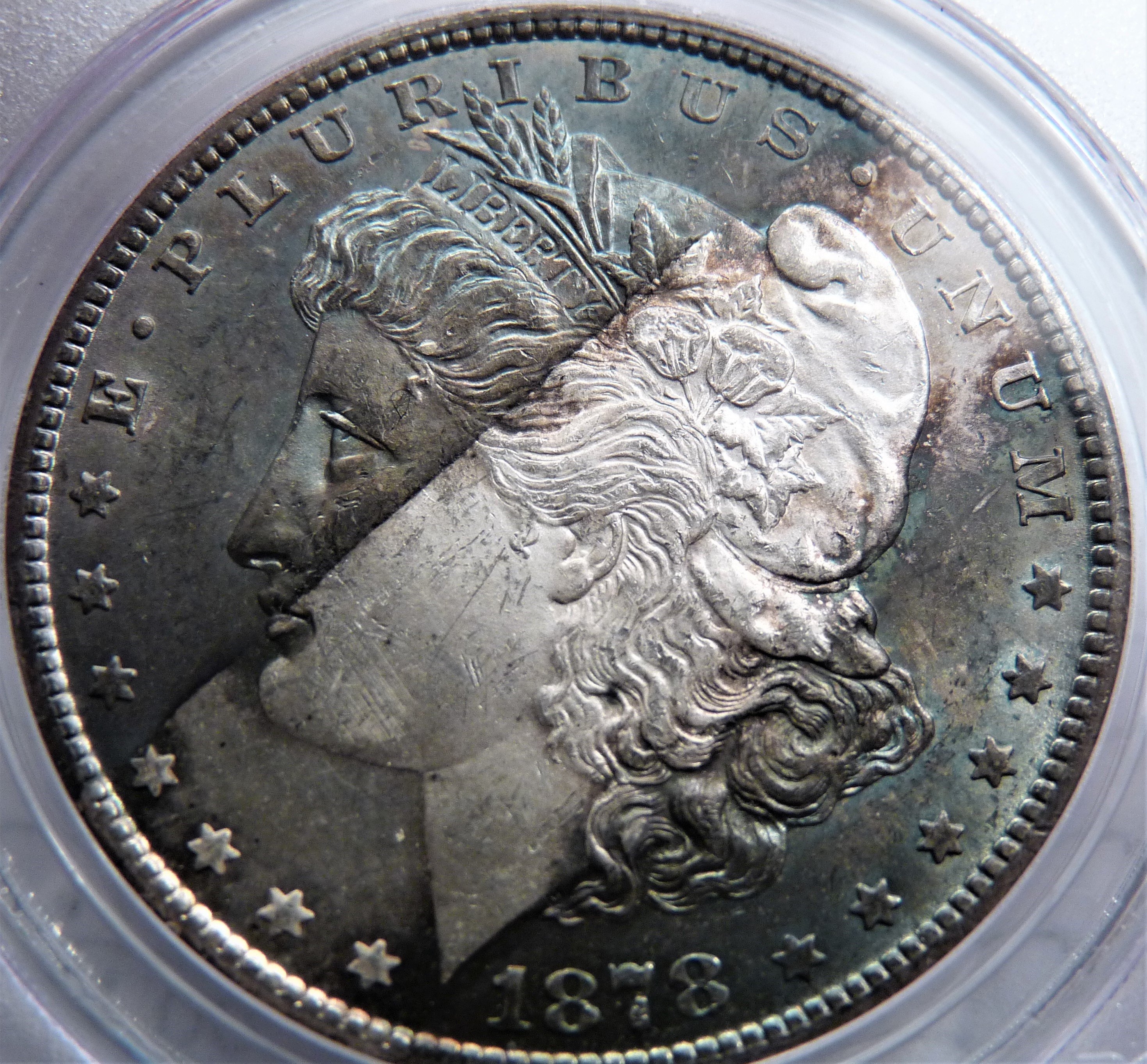
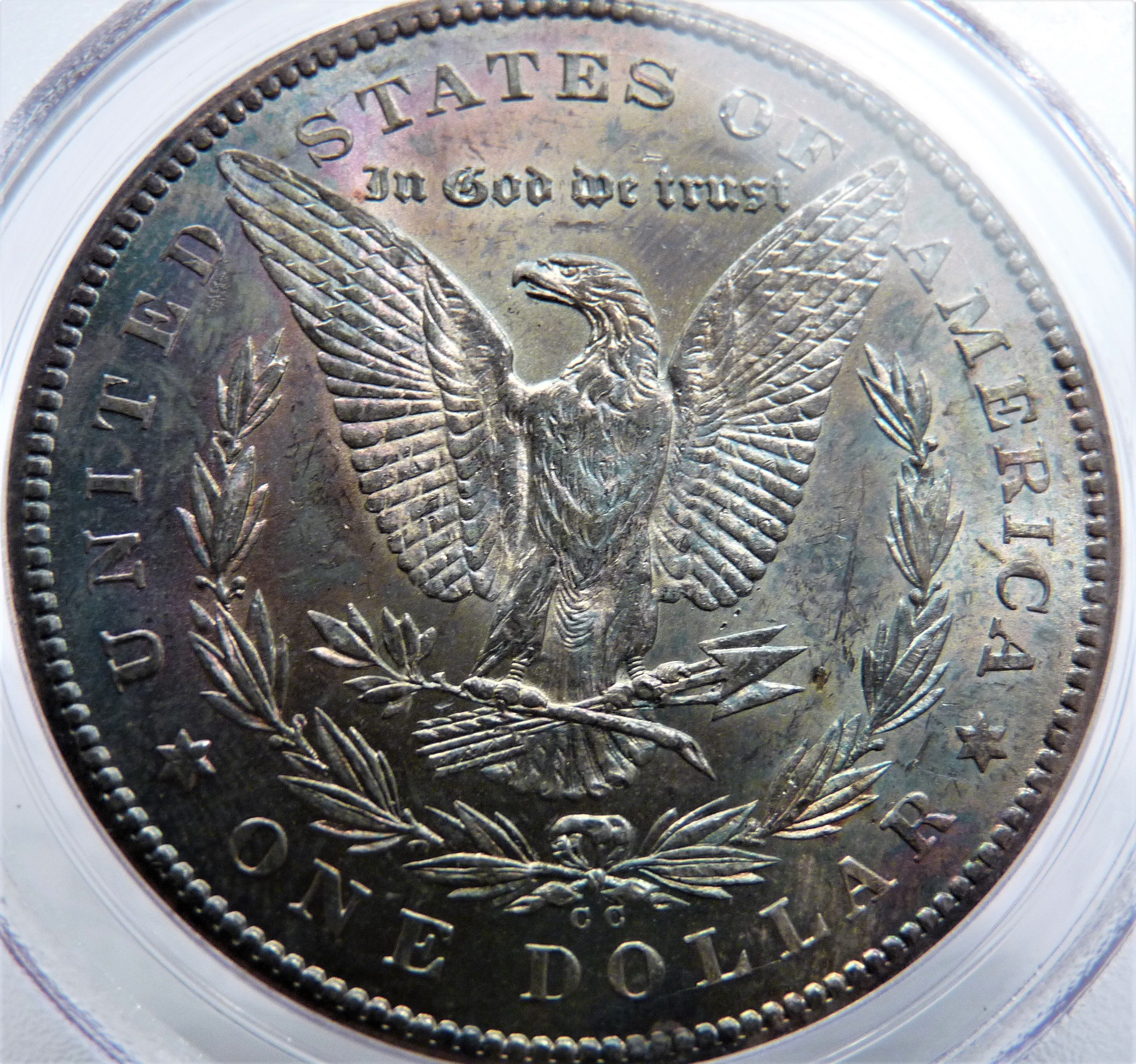
No, that’s not what I’d label “bull’s eye” toning, as neither the pattern nor the transition of colors is distinct enough.
Mark Feld* of Heritage Auctions*Unless otherwise noted, my posts here represent my personal opinions.
"Corrugated cardboard toning" Remember those ASEs?
Terminal toning
Does "wood grain" count as toning?
Collector, occasional seller
Cat eye toning
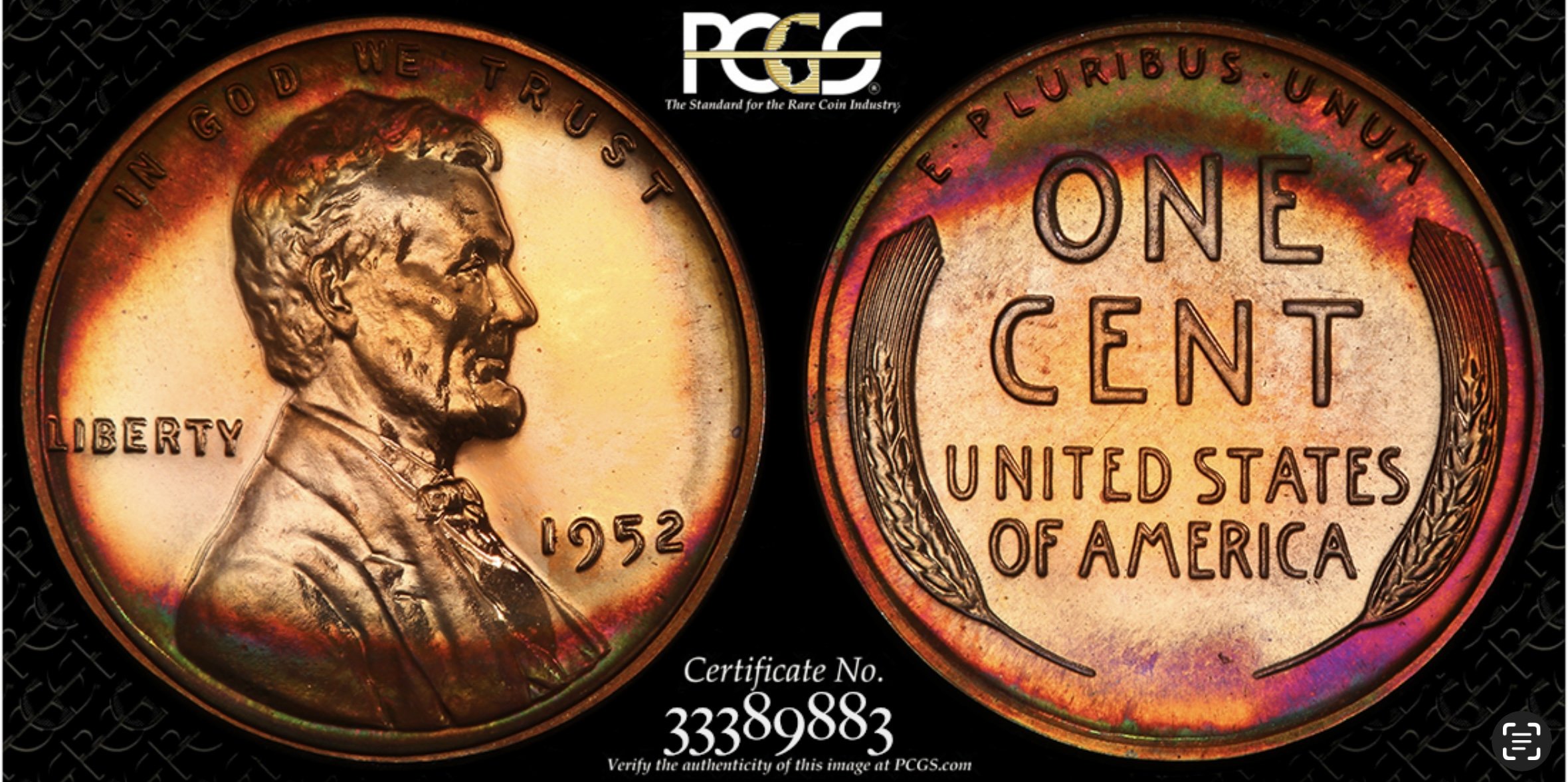
- Bob -

MPL's - Lincolns of Color
Central Valley Roosevelts
I unfortunately have a terminal toning Morgan . The reverse has some nice colors and an older holder. Assuming this was long term bag toning, probably in humid environment, with a coin resting on obverse causing some crescent toning that protected the whole coin from being black.
. The reverse has some nice colors and an older holder. Assuming this was long term bag toning, probably in humid environment, with a coin resting on obverse causing some crescent toning that protected the whole coin from being black.
Heat toning (as a form of AT.)
While the color doesn’t look natural, I wouldn’t assume that heat was the cause.
Mark Feld* of Heritage Auctions*Unless otherwise noted, my posts here represent my personal opinions.